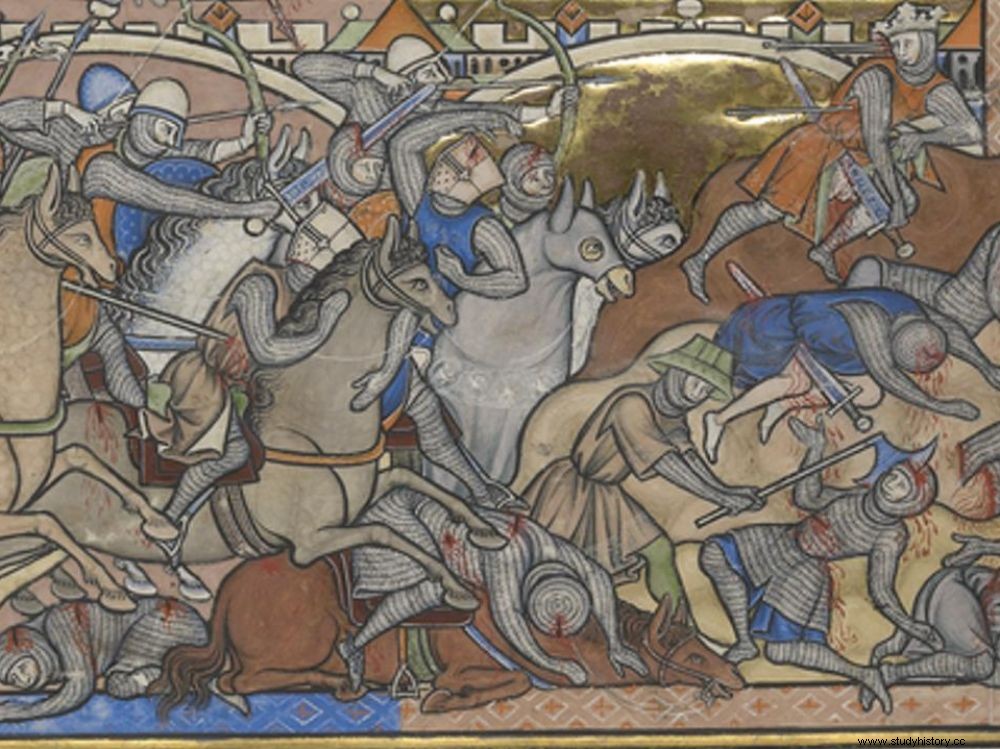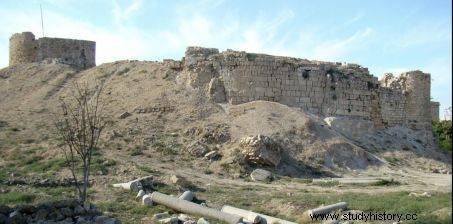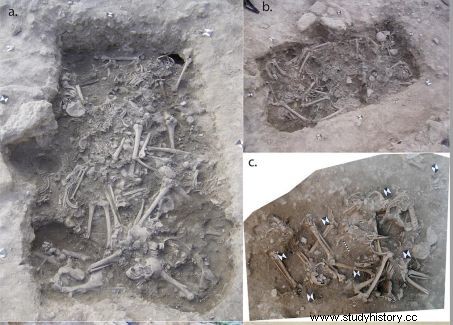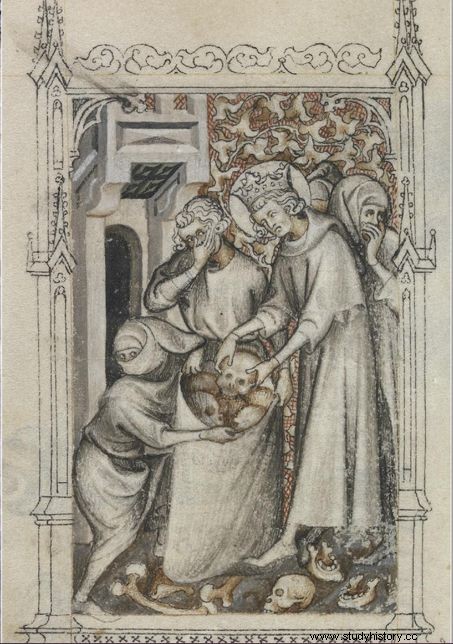The recent discovery, in Sidon, in Lebanon, of mass graves of crusaders dating back to the 13 th century - extremely rare vestiges - confirm the reality of the brutality of the period of the crusades.

Combat details of the raid of Sidon (Lebanon) dating from the 13 th century. These illustrations are from Maciejowski's Bible , made in France between 1244 and 1254.
Perforated, sliced, sheared, decapitated... The entangled human remains of at least 25 individuals with numerous traumatic marks were unearthed during archaeological excavations carried out in the moat located northeast of the Château Saint-Louis, in Sidon, south of Beirut (Lebanon).

Ruins of Saint-Louis Castle in Sidon (Lebanon). © Photos 12/Alamy/AlexeIA/AFP
The two identified mass graves of the ancient Sagette (medieval name of Sidon) have been dated thanks to the collection of Frankish belt buckles and a coin dating from the Crusades (1097-1291). Or the second part of the 13 th century, when those famous military expeditions led by Western Christians to reconquer Jerusalem and the Holy Land ended.

Images of medieval mass graves in Sidon, Lebanon. Credits:PLos One
Crusaders of various origins
All the skeletons collected by archaeologists from the University of Bournemouth (United Kingdom) showed unhealed wounds resulting from blows received with sharp instruments such as swords or axes. Their description is published in an article in the journal PLoS ONE. Analysis of dental isotopes as well as DNA studies indicated that some of the victims were born in Europe, others were of local Near Eastern ancestry, and a few were "mixed", i.e. descended from a one parent with genetic background from the East and the other from the West. Discoveries consistent with the diversity of the composition of Crusader society, as related by historical sources.

In red and yellow, the traces of impacts from sharp weapon wounds found on the skeletons of crusaders from the pits of Sidon (Lebanon). © PLoS ONE
Saint Louis would have participated in the burial of the corpses according to certain medieval chronicles
Sidon, where these remains were recovered, was a strategic port city, occupied by the Crusaders from 1110 and for more than a century. Along with many other coastal settlements, this city was one of the backbones of the Latin States of the East. But in 1253, Mamluk forces in Damascus, operating a kind of “remontada ” from the kingdom of Jerusalem, besieged and destroyed the fortress that the Crusaders used to defend the city. An event well documented by medieval chronicles such as L'Estoire de Eracles (13 e century). In 1254, Louis IX – known as Saint Louis –, King of France, then had it rebuilt but it was again conquered by the Mamluks in 1260, before being taken over by the Crusaders who retained control of it until it was abandoned in 1291. British archaeologists believe that the mass graves exhumed near the Château Saint-Louis are linked to one of these two confrontations. The Crusader archives also indicate that Saint Louis, who had taken the lead of the Seventh Crusade, was present in the Holy Land at the time of the attack of 1253 and would have himself participated in the burial of the corpses:“He [Saint-Louis, ndlr] had personally carried the bodies, all rotten and smelly, to place them in the trenches in the ground, and he never covered his nose, although others had done ”, thus reports the chronicles of Jean de Joinville, seneschal of Champagne, who then followed the sovereign.

Detail from Jean Pucelle's "Hours of Jeanne d'Evreux", depicting Saint-Louis, King of France, helping to collect and bury the remains of crusaders killed during the Mamluk raid of 1253 on Sidon (Lebanon). © The Metropolitan Museum of Art, New York, The Cloisters Collection.
The wounds on the bodies testify to the terrible reality of medieval wars
“These mass grave burials are indicators of moments of crisis. Time has therefore run out to give individual Christian burial to these men” , comments Yves Gleize, archaeo-anthropologist at Inrap. Responsible for the archaeological excavations of Atlit (Israel), he is currently studying one of the very rare Crusader cemeteries in the East located at the foot of the fortress of Château-Pèlerin, one of the largest in the kingdom of Jerusalem. The last stronghold to have been evacuated (without having fallen or conquered) by the last crusaders from all over the Latin East, on August 14, 1291. Three months after the fall of the mighty Acre (read Sciences et Avenir No. 862 ).
The Sidon clashes came as Crusader presence was increasingly contested. “The wounds found on these bodies allow us to better understand the terrible reality of these medieval wars” , notes Piers Mitchell, anthropologist at the University of Cambridge (United Kingdom), in a press release.
